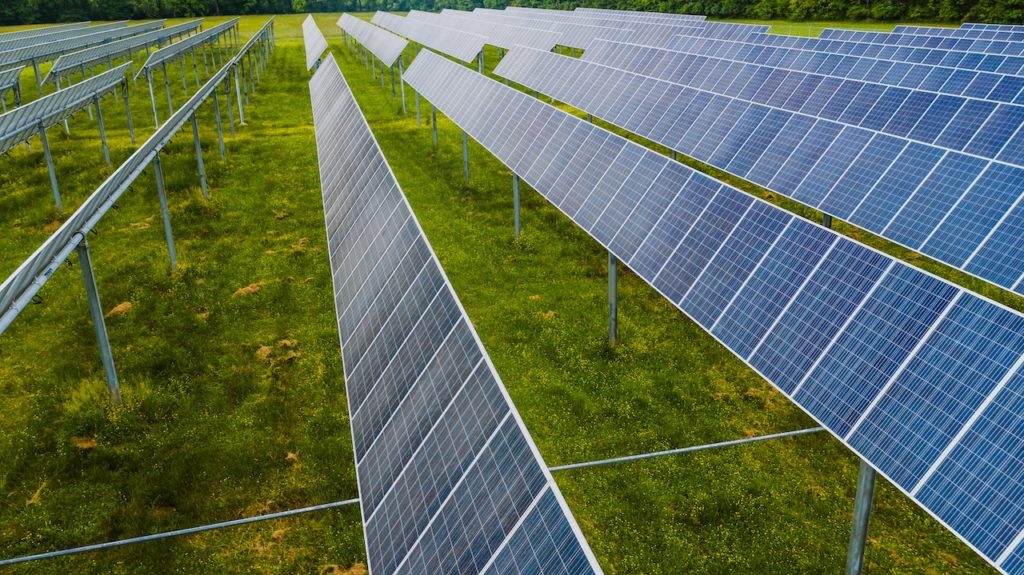In a world grappling with the challenges of climate change and depleting fossil fuel reserves, the importance of renewable energy sources cannot be overstated. As non-renewable energy sources face increasing scrutiny due to their detrimental environmental impacts and limited availability, renewable energy offers a promising solution for a sustainable future. Renewable energy sources mitigate climate change, reducing reliance on finite resources, promoting economic growth, and ensuring energy security.
What are Renewable Energy Sources

Renewable energy sources are those from naturally replenishing resources that are virtually inexhaustible or can regenerate relatively quickly. Renewable energy sources offer a sustainable and environmentally friendly alternative to fossil fuels, which are finite and depleted with extraction.
Solar, wind, water, and geothermal energy are all sources of power that harness natural elements without destroying the planet’s resources. We can mitigate climate change and create a sustainable future by reducing greenhouse gas emissions and using renewable energy.
12 Benefits of Renewable Energy Sources

Environmental Benefits
Compared with traditional fossil fuels, renewable energy sources have many environmental benefits. Climate change, air pollution, natural resource conservation, ecosystem preservation, and biodiversity protection are all benefits that stem from these practices.
Here are some of the environmental benefits of renewable energy:
1. Reduction of greenhouse gas emissions
Compared to fossil fuels, renewable energy sources emit significantly fewer greenhouse gases. CO2 and other greenhouse gases are released into the atmosphere when we burn coal, oil, and natural gas.
Renewable energy sources such as solar power, wind power, hydropower, and geothermal power, on the other hand, produce electricity without emitting greenhouse gases during operation. We can influence our ability to combat climate change and reduce CO2 emissions by switching to renewable energy sources.
2. Mitigating climate change
Renewable energy plays a crucial role in reducing greenhouse gas emissions, thus reducing the adverse effects of climate change. The Intergovernmental Panel on Climate Change (IPCC) recommends limiting global temperature rise to below 2 degrees Celsius above pre-industrial levels to prevent severe climate impacts.
Using renewable energy sources can help reduce emissions and transition to a low-carbon economy, providing a sustainable alternative to fossil fuels.
3. Preservation of natural resources
Fossil fuels deplete finite resources, but renewable sources do not. As a result of traditional energy sources, there are limited resources, resulting in resource scarcity and geopolitical conflict.
When we compare it to conventional energy, users can produce renewable energy from natural resources such as sunlight, wind, and water. We must use renewable energy sources to ensure the availability of non-renewable resources for future generations, thus minimizing the depletion of non-renewable resources.
4. Protection of ecosystems and biodiversity
The extraction and combustion of fossil fuels have adverse effects on ecosystems and biodiversity. The mining, drilling, and deforestation associated with fossil fuel production disrupt habitats, destroy wildlife populations, and degrade the environment.
There are fewer threats to biodiversity and a lower ecological footprint associated with renewable energy sources. For example, solar panels and wind turbines minimize habitat disruption and protect sensitive species by installing them on existing structures or low-impact areas.
5. Improved air quality
By minimizing or eliminating harmful pollutants associated with fossil fuel combustion, renewable energy sources contribute to improved air quality. In addition to sulfur dioxide (SO2), nitrogen oxides (NOx), particulates, and mercury, fossil fuel power plants emit other pollutants that negatively affect human health and the environment.
On the other hand, clean energy technologies produce electricity without releasing these pollutants, improving public health by reducing respiratory illnesses and improving air quality.
6. Water conservation
Solar and wind power require significantly less water than traditional fossil fuel-based power plants.
In arid regions, conventional power generation depends on water for cooling, resulting in water scarcity issues and significant water consumption. We can reduce water usage in the energy sector and alleviate pressure on water resources by switching to renewable energy.
Economic Advantages of Renewable Energy
Renewable energy offers numerous economic advantages, from job creation and economic growth to cost competitiveness and price stability. There are several ways in which renewable energy is transforming the energy sector due to these economic benefits:
7. Job creation and economic growth
Investment in renewable energy projects stimulates the economy and creates jobs. Engineering, technicians, construction workers, project managers, and researchers are all needed in the renewable energy industry.
New jobs are created across various sectors as renewable energy deployment expands, including manufacturing, installation, operation, and maintenance. The growth of renewable energy sources contributes to local and regional economic development, attracting investment and fostering innovation.
8. Expansion of the renewable energy industry
The transition to renewable energy sheds more light on the industry, driving innovation and technological advancements. Renewable energy technologies, equipment, and services are in high demand as more countries and businesses invest in renewable energy projects.
With this expansion, we can develop a robust supply chain, resulting in the growth of solar panels, wind turbines, and energy storage systems manufacturers. Renewable energy sources not only help developed countries, but developing countries can also benefit from these initiatives.
9. Creates employment opportunities
The renewable energy sector provides employment opportunities throughout the value chain. In addition to creating jobs, renewable energy technologies support local economies and contribute to industrial development.
Installation and maintenance of renewable energy systems require a skilled workforce, providing long-term employment opportunities. As a result of the decentralized nature of renewable energy systems, local communities benefit from a higher distribution of employment across regions.
10. Cost competitiveness and price stability
Renewable energy technologies have become more competitive with fossil fuel-based energy sources in recent years due to their rapidly decreasing costs. Electricity generated from renewable sources has become significantly cheaper due to technological advancements, economies of scale, and improved efficiency.
Renewable energy projects have reached grid parity in many regions, meaning their costs are on par with conventional energy sources or lower. Due to the free nature of renewable energy, it offers price stability, while fossil fuel markets are vulnerable to price fluctuations.
11. Mitigation of volatility in fossil fuel prices
Various factors could influence the cost of fossil fuel, including geopolitical tensions, market speculation, and supply interruptions. Countries can reduce their exposure to volatile fossil fuel prices by diversifying their energy mix with renewable sources. Renewable energy technologies can help stabilize electricity prices in the long run and mitigate the economic risks associated with fossil fuel dependency.
12. Technological innovation and export opportunities
Investing in renewable energy research and development drives technological innovation and creates export opportunities. Countries at the forefront of renewable energy technology development can export their expertise, technologies, and services to other regions. As a result, they strengthen their domestic economy and contribute to global renewable energy deployment and sustainable development.
Challenges and Solutions for Renewable Energy Sources

We must look for ways to combat some challenges to ensure a successful transition to renewable energy sources. Innovations are emerging to overcome these challenges. Let’s examine some of the main challenges and possible solutions:
1. Intermittency and grid integration
One of the main challenges with renewable energy sources like solar and wind is their intermittent nature. Depending on weather conditions, they may not produce electricity consistently. To address this problem, developers have created energy storage technologies, such as batteries, pumped hydro storage, and advanced grid management systems.
During low renewable energy production, energy storage allows excess renewable energy to be stored and used, ensuring a more reliable and stable power supply. A smart grid also allows renewable energy sources to be integrated and managed more efficiently into existing electricity grids, minimizing grid instability and improving their use.
2. Policy and regulatory support
Policy and regulatory frameworks play a crucial role in facilitating the deployment of renewable energy. Governments can provide incentives and subsidies to encourage investment in renewable energy projects. Feed-in tariffs, tax incentives, grants, and renewable portfolio standards are some policy mechanisms that can promote the growth of renewable energy.
Long-term planning and commitment to renewable targets are essential in providing a stable and predictable policy environment. This gives investors and industry stakeholders confidence.
3. Infrastructure and transmission
Expanding renewable energy capacity requires the development of new infrastructure and transmission systems. This can involve building new power plants, upgrading transmission lines, and establishing interconnections between regions.
Adequate planning and investment in infrastructure are necessary to accommodate the increasing share of renewable energy in the grid. Collaboration between governments, utilities, and private sector entities is vital to ensure the timely and efficient development of necessary infrastructure.
4. Cost and financing
While renewable energy technologies costs have been declining, upfront investment costs can still be a barrier to widespread adoption. Governments and financial institutions can facilitate access to affordable financing options, such as low-interest loans and green bonds, to support renewable energy projects.
Additionally, innovative financing models, such as Power Purchase Agreements (PPAs) and community-based initiatives, are emerging to enable broader participation and ownership of renewable energy projects.
5. Public awareness and acceptance
Public awareness and acceptance of renewable energy are important in driving its adoption. Education and awareness campaigns can help dispel myths and misconceptions about renewable energy, highlighting its environmental, economic, and societal benefits.
Engaging communities and stakeholders in decision-making and providing opportunities for local participation can foster a sense of ownership and support for renewable energy projects.
6. Research and development
Continued investment in research and development is essential to advance renewable energy technologies, improve efficiency, and reduce costs. Governments, academic institutions, and industry players should collaborate to support research initiatives and innovation in energy storage, advanced materials, and grid integration. Sharing knowledge and best practices can accelerate technological advancements and address common challenges different regions encounter.
While there are challenges to overcome in the widespread adoption of renewable energy, innovative solutions are emerging. Energy storage, smart grid technologies, supportive policies, infrastructure development, financing mechanisms, public engagement, and research and development are key areas where we are making progress.
By addressing these challenges and implementing solutions, we can accelerate the transition to a renewable energy-powered future and realize the environmental, economic, and social benefits it promises.
Conclusion
Building a sustainable future requires renewable energy sources. We must aim to reduce greenhouse gas emissions and preserve resources to combat climate change and protect ecosystems. Renewable energy sources provide energy security, independence, and resilience, reducing the need for fossil fuels and ensuring stable energy.
From an economic perspective, renewable energy sources create jobs, economic growth, and price stability. Investing in renewable energy and shaping a sustainable future that benefits the environment, economy, and society is the responsibility of individuals, governments, and businesses.







